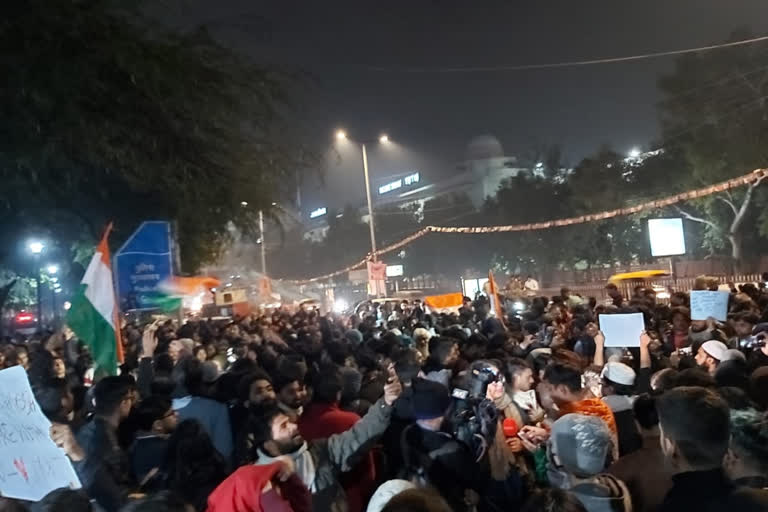New Delhi: “At about 8:30 PM on Sunday night, we found a student lying in the Sabarmati hostel backyard clearly in a state of shock and trauma. He had broken his right hand. The attackers had thrown him down from the first floor. By his admission, the student did not have any political affiliation,” an eye-witness to the ugly happenings on Sunday evening party told ETV Bharat.
Scores of students and even faculty members have been injured in a seemingly pre-planned brazen assault by a horde of masked youth who barged into Sabarmati hostel in Jawaharlal Nehru University (JNU) on Sunday evening.
But what stood out is the effectiveness of social media and the lightning speed it operates on. WhatsApp forwards, Facebook posts, etc of the bloody assault, bleeding students, the screams and the trauma, posted at a frenzied pace started dominating trends in cyberspace. By late evening, a clear narrative had emerged—JNU students had been wronged, and that the intruders/attackers were wrong.
Social media is an unfathomable cesspool and devours whatever is poured into it. But the skilfull propagation and the speed of it is determined by the acceptability of the content. In this case, there has been strong acceptability and seemingly that space is growing now. The novelty this time was that even individuals believed to be sympathetic to the ‘Sangh Parivar’ were dishing out forwards.
If the battle was for the heart and mind, this round was indeed bagged by JNU. From the tactical point of view, the assault could not have been more ill-advised and badly-executed.
“The JNU administration is trying to brand it as a clash between two groups of students, it was not. It was a violent attack by a mob of outsiders on a peaceful protest where JNU teachers and students were about to form a human chain,” says another eye-witness Prof Jayati Ghosh, a leading development economist who teaches economics at JNU.
The ugliness of the incident is further marred by reports that allege of the police and the University administration being in cahoots with the attackers.
“What is amazing is the open complicity. It was a total pre-meditated as we saw the police vans parking in from about 4 PM onwards. From about 6:30 PM to 9 PM, it was utter mayhem. Initially, the outsiders numbered about 150-200. I am told they grew much bigger later.”
At the root of the incident is the undoubted clash of ideologies—between the right-wingers on one side and a motley combination of the centre and the left on the other side. That is why it is believed that the twin issues of registration of students for the new admission season and the hike in fees is just the tip of the proverbial iceberg.
Asked if Sunday’s incident and its fallout was a watershed moment, Ghosh says: “I do not know what is the breaking point or turnaround now. At the moment, I am completely insecure and do not know what to do if those goons return.”
No wonder there has been a scramble among political parties for their fair share of the cake. But if the optics and the narrative in the discourse in social media is any indication, JNU is the clear winner.
READ: LIVE: Students across India protest against JNU violence



